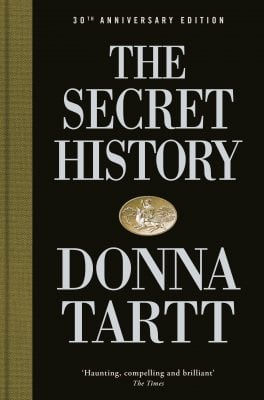As the season of back to university is finally upon us, I thought it fitting to kick off the term with what has now become a very popular genre of literature: dark academia.
According to various online sources, dark academia is described as a literary and social media aesthetic, otherwise known as a trend, that often romanticises upper classes of society in an academic setting with a focus on learning the arts, poetry, classics etc. The ‘dark’ aspect of this sub-genre, however, derives from common tropes of the pursuit of knowledge, and an exploration of death. The gothic elements of the setting also add to its overarching effect of mystery and the illicit, which allows the aesthetic to distinguish itself from its counterpart light academia. Apart from the intriguing yet morbid plot twists of dark academia, young readers have managed to create a whole aesthetic around this genre that justifies its popularity. The attractive visual of gothic architecture, preppy style, old libraries, candlelight, dark wooden furniture, and classical music, is what draws the readers into this unnerving literary world.
Fortunately, most of the tropes that define the dark academia subculture can be found in Donna Tartt’s The Secret History, a.k.a. one of the most interesting and captivating novels on the market (in my not-so-humble opinion). By combining murder, suspense, Latin and Greek lessons, and an unreliable narrator in an American college setting, Tartt has essentially created the elixir of every dark academia fan’s life. Published in 1992, now celebrating its 30th anniversary, Donna Tartt’s novel follows a group of six elite misfits brought together by their passion for Ancient Greek and their trust in their Classics professor, Julian Morrow. Told from the perspective of Richard Papen, the outsider on the inside, the readers are witness to their eccentricities, cultish behaviour, and untold secrets. Even from the inside, Richard is rarely privy to their plans, their thoughts and, especially, their intentions. This means that, as readers, we discover the many plot twists and shocking news alongside the main character, despite his retrospective narrative. Furthermore, even the tone of the novel, the uniqueness of the characters constructed, and their (sometimes disturbing) relationships, work together to maintain the mystery and unease hidden between the words on the page. If the abundant elements of dark academia do not entice you enough to pick up a copy of this book, then let the first sentence of the novel do so:
“The snow in the mountains was melting and Bunny had been dead for several weeks before we came to understand the gravity of our situation.”
There are other forms of this popular sub-genre that are circulating the internet; ones that do not necessarily take place in schools yet still encompass the allure of dark academia. The Picture of Dorian Gray by Oscar Wilde, another favourite of mine, has been classed as a must-read dark academia novel. Despite not including a learning environment, Wilde’s novel still relies on other aspects that define dark academia’s twisted beauty, such as philosophical discussions, classical music, the arts, paintings, and more importantly, the slow and torturous descent into corruption. In less than 300 pages, Wilde manages to convince the readers that Dorian Gray’s addiction to his youth, beauty, and the repercussions of bad decisions, enables himself to be consumed from the inside out. With only a painting to record his true sins and decline to evil, The Picture of Dorian Gray demonstrates the toxicity of the aristocratic environment and reveals their emphasis on appearances. The ending, however, cleverly makes us doubt and reflect on our understanding of the novel and puts into question whether the whole book was purely an illusion.
While dark academia tends to be romanticised in our society, it is important to include some of the criticism that has come to light since its popularity. This sub-genre has been described as elitist, Eurocentric, and lacking inclusion. In other words, very white. Since much of its aesthetic originates from old, traditional colleges, it is no wonder that much literature classified under its genre is written by privileged white authors about privileged white characters. However, it is crucial in today’s world to incorporate diversity into every aspect of society and that includes literary trends. Therefore, I highly recommend this list below of gripping dark academia books written by POC authors which touch upon the same eery and scholarly tropes:
- Babel by R.F. Kuang
- Ace of Spades by Faridah Àbíké-Íyímídé
- A Lesson in Vengeance by Victoria Lee
- Catherine House by Elisabeth Thomas
- How We Fall Apart by Katie Zhao
Featured image: Jez Timms on Unsplash


